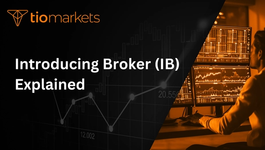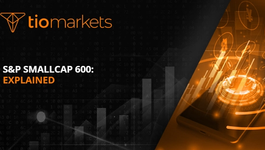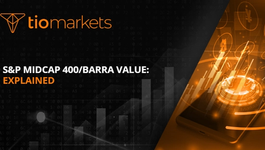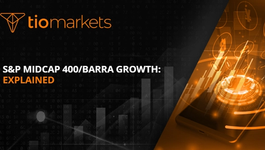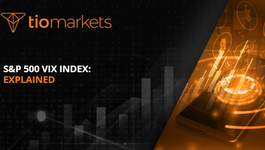Gross asset value: Explained
BY TIOmarkets
|July 27, 2024Understanding the concept of Gross Asset Value (GAV) is crucial for anyone involved in the world of trading. This term, often used in the financial and investment sectors, refers to the total value of all assets within a fund or portfolio before the deduction of any liabilities or debts. The GAV provides a comprehensive snapshot of a portfolio's total worth at a specific point in time.
While the concept may seem straightforward, it's intricacies and implications are far-reaching, impacting everything from investment strategies to risk management. This article aims to provide an in-depth exploration of Gross Asset Value, its calculation, its role in trading, and much more.
Understanding Gross Asset Value
The Gross Asset Value, as the name suggests, is the gross, or total, value of a portfolio's assets. It includes all types of assets, such as stocks, bonds, real estate, cash, and other investments. It is a pre-liability figure, meaning it does not account for any debts or obligations the portfolio may have.
Understanding the GAV is crucial for investors and traders alike. It provides a clear picture of a portfolio's size and composition, which can inform investment decisions and risk management strategies. Moreover, it serves as a benchmark for comparing the performance of different portfolios or funds.
Calculation of Gross Asset Value
Calculating the GAV involves adding up the current market value of all assets within a portfolio. This includes both tangible and intangible assets. Tangible assets are physical items like real estate, equipment, and inventory, while intangible assets include things like patents, copyrights, and brand recognition.
The calculation also includes any income earned from the assets, such as interest, dividends, or rental income. However, it does not take into account any liabilities or debts associated with the assets. Therefore, the GAV can often be much higher than the net asset value (NAV), which subtracts liabilities from the GAV.
Importance of Gross Asset Value in Trading
In the world of trading, the GAV plays a crucial role in several areas. For one, it helps traders and investors assess the size and composition of a portfolio. This information can inform investment strategies and risk management approaches.
Moreover, the GAV serves as a benchmark for comparing the performance of different portfolios or funds. By looking at the GAV, traders can get a sense of how a fund or portfolio is performing relative to others. This can help them make informed decisions about where to allocate their resources.
Implications of Gross Asset Value
The Gross Asset Value has several implications for trading and investment. For one, it provides a comprehensive snapshot of a portfolio's total worth, which can inform investment decisions and risk management strategies. Moreover, it serves as a benchmark for comparing the performance of different portfolios or funds.
However, the GAV also has its limitations. Since it does not take into account any liabilities or debts, it can often overstate the true value of a portfolio. Therefore, it's important for traders and investors to also consider the net asset value (NAV) when assessing a portfolio's worth.
Gross Asset Value and Risk Management
Understanding the GAV is crucial for effective risk management in trading. By providing a clear picture of a portfolio's size and composition, the GAV can help traders assess the level of risk associated with a particular investment strategy.
For example, a portfolio with a high GAV may be seen as more risky, as it indicates a large amount of assets at stake. On the other hand, a portfolio with a low GAV may be seen as less risky, as it indicates a smaller amount of assets at risk. Therefore, understanding the GAV can help traders make informed decisions about risk tolerance and asset allocation.
Gross Asset Value and Investment Strategies
The GAV can also inform investment strategies. For example, a trader may choose to invest in a fund with a high GAV in order to gain exposure to a wide range of assets. Alternatively, a trader may choose to invest in a fund with a low GAV in order to limit exposure to risk.
Moreover, by comparing the GAVs of different funds or portfolios, traders can get a sense of how they are performing relative to each other. This can help them make informed decisions about where to allocate their resources.
Limitations of Gross Asset Value
While the GAV provides a comprehensive snapshot of a portfolio's total worth, it also has its limitations. The most significant of these is that it does not take into account any liabilities or debts associated with the assets. This means that the GAV can often overstate the true value of a portfolio.
Moreover, the GAV is a static figure, representing the value of a portfolio at a specific point in time. It does not account for changes in the value of assets over time, which can be significant in the volatile world of trading. Therefore, while the GAV is a useful tool for assessing a portfolio's worth, it should not be the only factor considered.
Overstating Portfolio Value
Since the GAV does not take into account any liabilities or debts, it can often overstate the true value of a portfolio. For example, if a portfolio has a high amount of debt, the GAV will not reflect this, leading to an inflated perception of the portfolio's worth.
This can be problematic for traders and investors, as it can lead to overconfidence and potentially risky investment decisions. Therefore, it's important to also consider the net asset value (NAV), which subtracts liabilities from the GAV, when assessing a portfolio's worth.
Ignoring Changes in Asset Value
Another limitation of the GAV is that it is a static figure, representing the value of a portfolio at a specific point in time. It does not account for changes in the value of assets over time, which can be significant in the volatile world of trading.
This means that the GAV may not accurately reflect the current worth of a portfolio, especially if asset values have fluctuated significantly since the GAV was calculated. Therefore, while the GAV is a useful tool for assessing a portfolio's worth, it should be used in conjunction with other measures that take into account changes in asset values over time.
Conclusion
In conclusion, the Gross Asset Value is a crucial concept in the world of trading. It provides a comprehensive snapshot of a portfolio's total worth, informing investment decisions and risk management strategies. However, it also has its limitations, and should not be the only factor considered when assessing a portfolio's worth.
By understanding the GAV and its implications, traders and investors can make more informed decisions, ultimately leading to better outcomes in the volatile world of trading.
Start Trading with TIOmarkets
Now that you're equipped with the knowledge of Gross Asset Value, take the next step in your trading journey with TIOmarkets. As a top-rated forex broker, we offer a robust online trading platform where you can trade over 300 instruments across Forex, indices, stocks, commodities, and futures markets. Benefit from low fees and join our community of 170,000+ traders in over 170 countries. Enhance your skills with our educational resources and step-by-step guides. Ready to dive into trading? Create a Trading Account today and unlock the potential of the markets.

Risk disclaimer: CFDs are complex instruments and come with a high risk of losing money rapidly due to leverage. You should consider whether you understand how CFDs work and whether you can afford to take the high risk of losing your money. Never deposit more than you are prepared to lose. Professional client’s losses can exceed their deposit. Please see our risk warning policy and seek independent professional advice if you do not fully understand. This information is not directed or intended for distribution to or use by residents of certain countries/jurisdictions including, but not limited to, USA & OFAC. The Company holds the right to alter the aforementioned list of countries at its own discretion.
Join us on social media

Behind every blog post lies the combined experience of the people working at TIOmarkets. We are a team of dedicated industry professionals and financial markets enthusiasts committed to providing you with trading education and financial markets commentary. Our goal is to help empower you with the knowledge you need to trade in the markets effectively.
